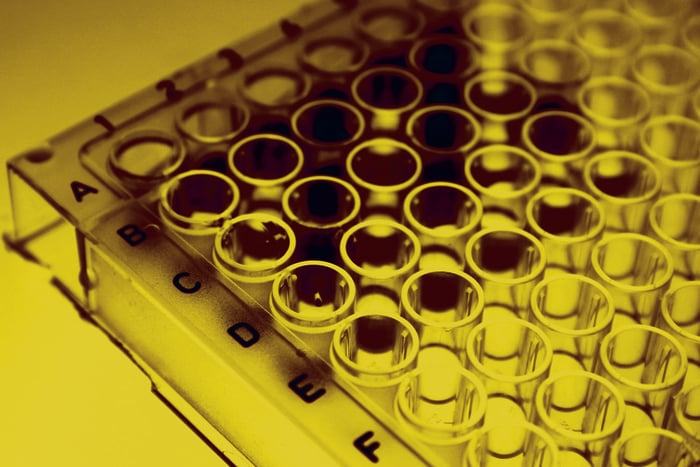Over expression of recombinant protein in bacteria can lead to the accumulation of insoluble protein, which aggregates and is sequestered to inclusion bodies. Slow growth rate and low temperatures during protein expression will help in solubility of many over expressed proteins, however some proteins still form Inclusion Bodies. Inclusion Bodies are pure proteins aggregated in bacterial cytoplasm, but sometimes can be formed in periplasm. Though the process of purification is tedious, we can get pure active protein by using various purification steps. Utmost care to be taken during Inclusion Bodies purification as the process is harsh on delicate proteins and may result in the loss of protein activity.
Protein Solubility & Refolding Active Proteins from Inclusion Bodies
Topics: Protein Extraction
The Sandwich ELISA: Process and Practical Applications
The Sandwich Enzyme-Linked Immunosorbent Assay (ELISA) is one of the most efficient laboratory procedures used in detecting the presence and measuring the concentration of a target antigen in a completely unknown sample. Its superior sensitivity and extremely robust nature makes it a great diagnostic tool for medical purposes and is especially useful in identifying potential food allergens and/or testing for certain drugs.
Topics: Assay Development (ELISA)
How to Improve Spot Resolution During 2D-Electrophoresis
While several protein separation technologies have been developed in recent years, two-dimensional gel electrophoresis remains one of the most popular techniques used in the field of proteomics. This is not surprising since 2D PAGE is routinely used to accurately analyze the individual components of even the most complex proteins, and can simultaneously resolve more than 5000 proteins (depending on the gel size used).
Topics: Protein Electrophoresis
Recombinant Protein Expression Systems: Pros & Cons
Recombinant production of proteins involves transfecting cells with desired gene in a DNA vector. The gene then translates into a protein using host cellular machinery. These expressed proteins can then be extracted by lysing the cells ans subsequent purification steps. Both Prokaryotic and Eukaryotic expression systems are widely used . Each system has its own advantages and disadvantages. A particular expression system is chosen depending on economic and qualitative aspects, such as the type of protein, function and desired protein yield.
Topics: Protein Purification







